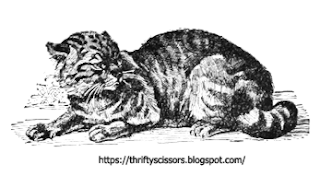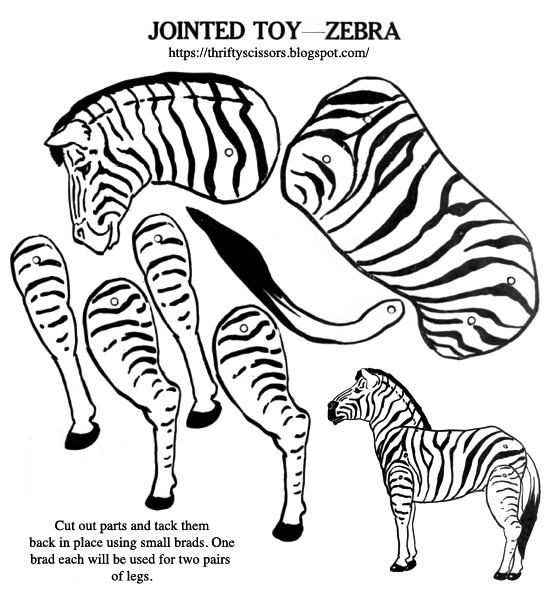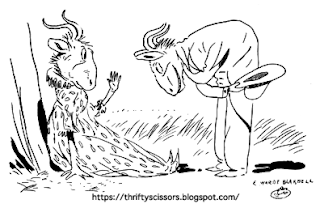 |
| Both male and female African elephants have tusks. However, only some male Indian elephants have tusks today. |
The elephant is the largest living land animal, comprising two species, the African and the Asiatic.
33 Facts About Elephants:
- The African elephant is the larger, stronger and more ferocious of the two, its hide is tougher and its ears larger, its head is less elevated.
- Its back slopes downward from shoulders to rump.
- Its trunk is longer and drags on the ground, even when the end of it is curled.
- Both sexes have tusks.
- The Asiatic, or Indian, elephant, as it is often called, is smaller.
- The Asiatic elephant's back is decidedly rounding, and only the males bear tusks.
- It is this elephant which is seen at circuses, for unlike the African elephant, it is tame in captivity.
- Sometimes elephants attain the height of fifteen feet, but usually a mature animal is from nine to ten feet high and weighs from 4,000 to 10,000 pounds.
- The body is very bulky, the legs are enormously large and almost straight and the short toes are covered by hoof-like nails.
- The skin of the elephant is very thick and coarse, and it bears only here and there a few scattered hairs.
- The most remarkable feature of the elephant is its long trunk, an extension of the nose. It has two tubes extending to the tip.
- This tip is exceedingly sensitive, and in one species it is furnished with two small projections; one, which somewhat resembles a finger, extends from the upper surface, the other projects from the lower side.
- By means of its trunk, the animal can pick up very small objects.
- The trunk is provided with very strong muscles and is useful in procuring food and for defense.
- With his trunk the elephant picks up and puts into his mouth all his food and water.
- With its trunk, the elephant makes a loud trumpeting noise, his signal of alarm or anger.
- The cutting teeth on each side of the upper jaw develop into long tusks, useful to the animal in a natural state both for grubbing food and for defending itself against attack.
- In some well-grown males each tusk weighs as much as 200 pounds.
- Although the head of the elephant is enormously large, and its forehead broad, yet its brain is small.
- However, this does not show any lack of intelligence, for no animal, with the possible exception of the horse and dog, can be taught to do more things requiring intelligence than the elephant.
- Elephants live in herds of considerable size, but the old males sometimes leave the herds or are driven from them, and thereafter live solitary lives.
- They usually become vicious and exceedingly destructive sometimes demolishing native crops. Such elephants are commonly called rogues.
- The wild elephants are caught in various ways. Sometimes pits are dug, into which the animals fall; or, a strong enclosure is built, into which the elephants are driven by fires, gun shots or other loud noises.
- In some localities trained elephants are sent out into the forests to make the acquaintance of wild ones and lead them into captivity.
- Two tame elephants can keep a single wild one so interested that the hunters are able to come up and put heavy chains about its legs and tie it to a tree, where it is held during the furious anger which follows its capture.
- After a long and tedious struggle, the captured elephant is subdued and then becomes tame and submissive.
- Elephants have been known since very early times. The earliest records in history tell us that they were trained by man to do various things even to take part in war.
- Hannibal had with him an army of elephants when he invaded Italy, and much of his success was due to the terror they inspired.
- The animals have been used to a greater extent in India than in any other country.
- There they have been for centuries a chief means of conveyance, carrying passengers in commodious canopied seats on their backs.
- Two or more persons may occupy this seat; the driver sits on the animal's neck.
- Elephants can be taught to do numerous kinds of work, to Lift great weights and to carry heavy loads.
- Many elephants were once held in captivity, altogether for show purposes. There was hardly a zoological garden in existence that did not have one or more of these animals.
More Facts About Elephants from The Web:
- The Ringling Bros. elephants perform last show! and their retirement party and Where do the Ringling Bros. elephants live now?
- Canadian elephants in search of a new home in California.
- Hundreds Of Elephants Are Mysteriously Dying In Southern Africa
- Elephant guide: species facts and best places to see in the wild
- Elephants of Today
- Baby Elephants: Play Fight!
- Baby Elephant is Orphaned and Raised by Human Friends
More About Elephants from Our Blogs:




































